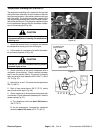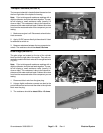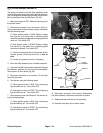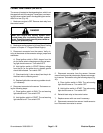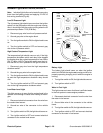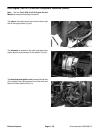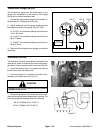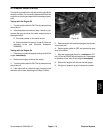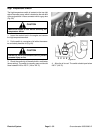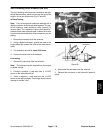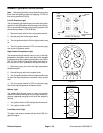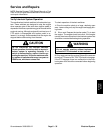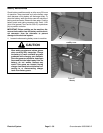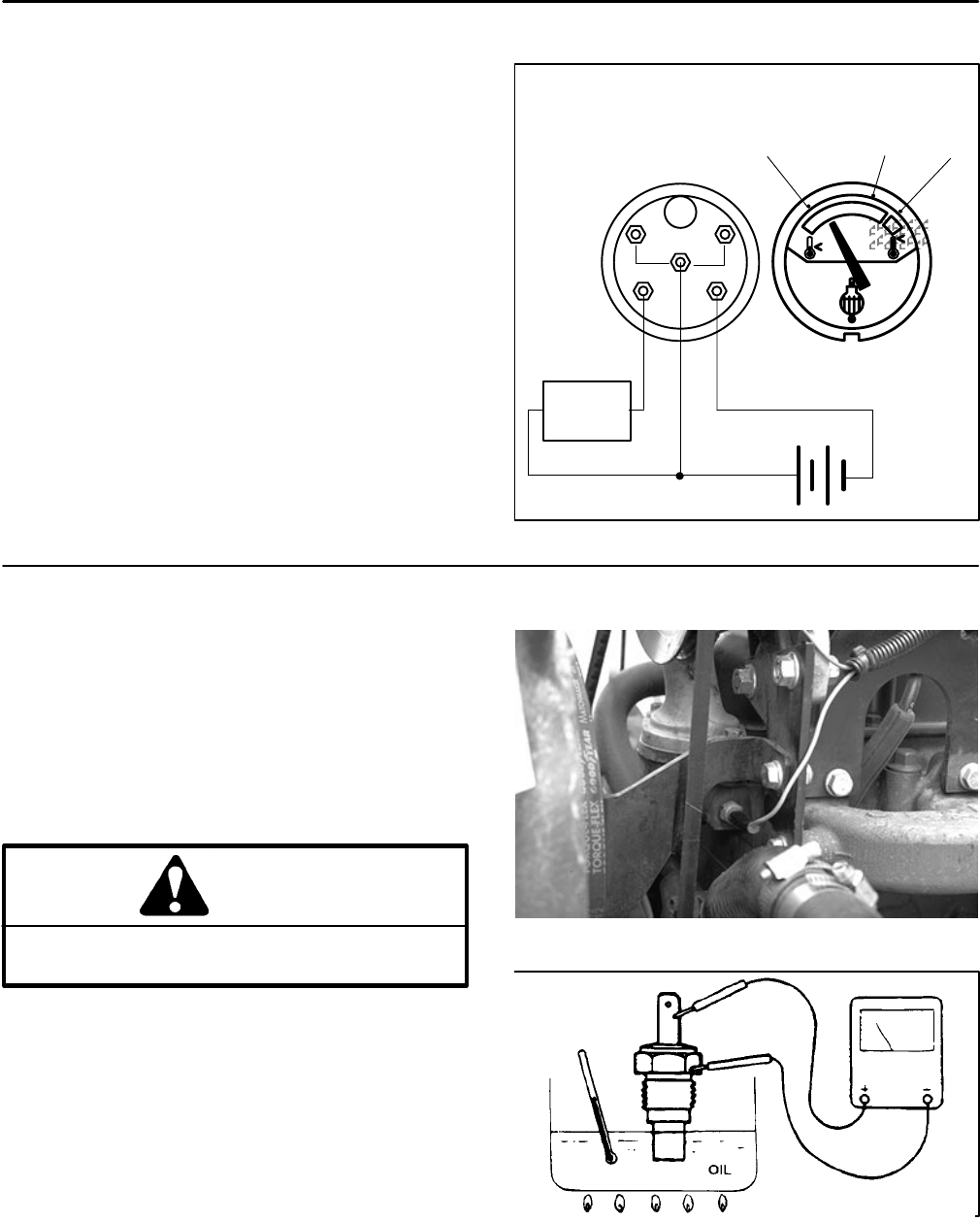
Temperature Gauge (GM 3000)
The temperature gauge can be tested using a new
gauge as a substitute or by the use of a DC voltage
source and a variable resistance box.
1. Connect the temperature gauge to the variable re-
sistance and DC voltage source (Fig. 34).
2. Adjust resistance until the gauge needle points to
following test points on the gauge (Fig. NO TAG):
A. At 150_F the resistance setting should be from
113 to 123 ohms.
B. At 180_F the resistance setting should be from
68 to 73 ohms.
C. At 240_F the resistance setting should be from
24 to 37 ohms.
3. Disconnect the voltage source, gauge, and variable
resistance.
S
I
G
+
–
12 VDC
BACK
240_F
180_F150_F
VARIABLE
RESISTANCE
Figure 55
Thermistor (GM 3000)
The thermistor is located on the bottom right side of the
water pump, which is located on the rear end of the en-
gine block. It has a connector which a tan wire (Fig. 56).
1. Lower the coolant level in the engine and remove
the thermistor from the water pump.
2. Put the thermistor in a container of oil with a ther-
mometer and slowly heat the oil (Fig. 57).
CAUTION
Handle the hot oil with extreme care to prevent
personal injury or fire.
Figure 56
3. Check the resistance of the thermistor with a multi-
meter (ohms setting) as the temperature increases. The
following resistance readings should be indicated:
108 to 78 OHMS at 140_F (60_C)
59 to 51 OHMS at 212_F (99_C)
Figure 57
Electrical System
Page 6 – 30
Groundsmaster 3000/3000–D



